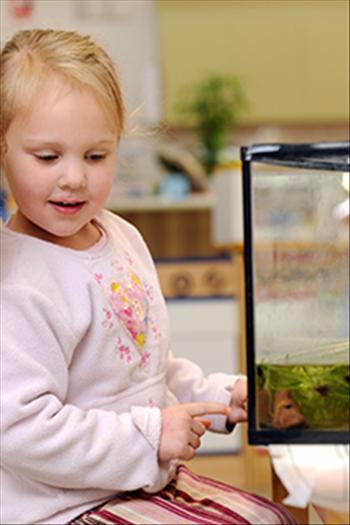Setting up a fish tank
Duration/age

Once you have decided that as a family you are going to keep fish, go to the pet shop together to choose the type and number of fish you want. Will you be getting tropical fish that will require warm water and a heater or will you be getting cold water fish? How big is the tank you will be using? To figure out how many fish you can keep you will need to know the size of the tank.
Ask for advice on what fish will live happily together in the tank. Some fish have to live on their own as they do not get on with other fish. What food do they eat and how often will they need to be fed? While in the pet shop look at the fish tanks that are set up and talk about what is in each tank and whether you will need the same things for your fish. Ask the pet shop owner to write down instructions for you so that you know how to set up the tank when you get home.
When you arrive home there will be lots of decisions to make.
Where should we put the tank? Will it need to be close to running water or a power point? How much water will we need to fill the tank? How will we get the water into the tank? Should we use a hose, a bucket or a jug?
How long do we have to wait before we can put the fish in? Where will we keep the fish food?
Materials you will need
- Bucket
- Aquarium
- Water
- Stones
- Fish
- Plants
- Shells
- Rocks
- Fish tank
- Jugs
Skills this activity improves
Why does this matter?
Children are learning that there are different ways we can talk about size and that size relates to temperature and capacity. Talking about the size of the tank helps children to explore the concept of capacity, space and quantity. Children are also learning to sort and classify different objects through the description they use, such as a cold water fish compared to a warm water fish. Looking at the instructions on how to keep fish with your child helps them to understand that we can use and represent number in different ways.
What does this lead to?
Setting up the fish tank helps children to understand that number and measurement can be represented in different forms and the different forms help them to make sense of their world. Being able to sort and classify objects by the different attributes helps children to make decisions about which mathematical tool or reasoning to use. For example, is it a problem about measurement or is it a problem about space?
Language to use
- Fish, plants, rocks
- Aquarium, fish tank
- Hot, cold
- Instructions
- Fresh water, saltwater
- Fish food
- Top, bottom, edge, front, back
- Together, separate, on own
Questions to use
- How do we heat the water?
- What fish can’t live together?
- What goes in the bottom of the tank?
- How much water will the fish need?
Useful tips
- If adding a filter to the tank, talk to your child about the safety of electrical devices and water.
- For information on water safety visit www.parenting.sa.gov.au
- You might also want to look at the Getting a new pet activity.
- Remember to talk to your child in your home language.
More ideas
- Look at what other animals could live in a water environment.
- Make a fishing game for home with paper and magnets.
Variation by age
Three to five year olds
- Google water habitats and explore the different creatures that live in water.
- Make a book about setting up the fish tank.
- Create a chart of the different types of fish, where they live and what they eat.
- Go to the beach, creek or pond to see what you can catch in the water.
- Go fishing.
Questions to ask
- What else lives in the sea?
- Do other things live in water?
- How do the fish breathe in the water?
- Is all water the same?
- Do all creatures that live in the sea swim?


